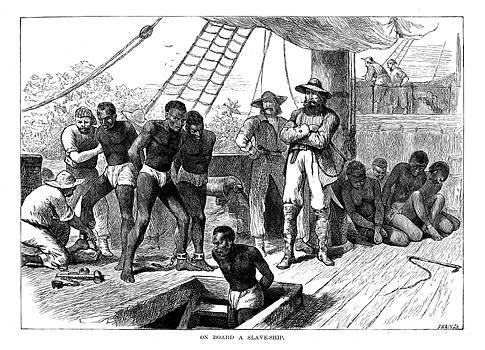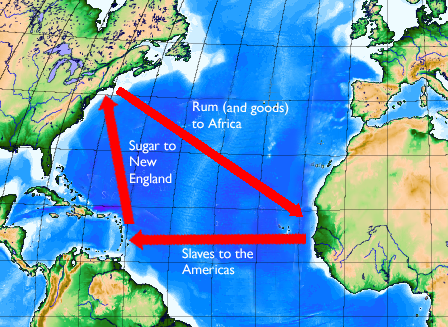The African slave trade

Basic overview
The Trans-Atlantic Slave Trade began around the mid-fifteenth century when Portuguese interests in Africa moved away from the fabled deposits of gold to a much more readily available commodity -- slaves. By the seventeenth century the trade was in full swing, reaching a peak towards the end of the eighteenth century. It was a trade which was especially fruitful, since every stage of the journey could be profitable for merchants - the infamous triangular trade.
Why the Europeans were so interested in trading the Africans
The main reason the interest in African slaves were the fact that when the Europeans were trying to expand their empire they lacked a major resource- a reliable work force. In most cases the indigenous peoples they had working for them were proven unreliable as the were dying from diseases the caught in Europe which they then transferred to others. The Europeans themselves were unsuited to the climate themselves and caught tropical diseases very easily. Africans, on the other hand, were great workers. They usually had experience of agriculture and ranching. They were also used to a tropical climate, resistant to most tropical diseases, and they could be "worked very hard" on plantations or mines.
Was slave trading new to Africa?
Slave trading was not new to Africa. In fact Africans had been traded as slaves for centuries - reaching Europe by the Islamic-run, trans-Saharan, and trade routes. The Slaves obtained from the Muslim dominated North African coast however proved to be too well educated to be trusted. So often they had the tendency to rebellion against the traders.
What was the triangular trade and its stages?

The three stages of the Triangular Trade, which was named for the triangular shape it makes on a map, proved lucrative for many merchants. It was used to transport slaves and goods to the Americas and other countries
The first stage of the Triangular Trade was taking manufactured goods from Europe to Africa such as cloth, spirit, tobacco, beads, cowrie shells, metal goods, and guns. The guns were used to help expand empires and obtain more slaves, until they were finally used against Europeans. These items were then exchanged for African more slaves.
The second stage of the Triangular Trade or the middle passage involved shipping the all of the slaves to North, South, and Central America.
The third and final stage of the Triangular Trade had the Europeans return with the produce from the slave-labor plantations such as cotton, sugar, tobacco, molasses and rum.
for a better view of the map or the trading routes click on map right here
How Did the Europeans Obtain the Slaves?
Between 1450 and the end of the nineteenth century, slaves were obtained from along the west coast of Africa with the full and active co-operation of the African kings and merchants. There were occasional military campaigns organized by Europeans to capture slaves, especially by the Portuguese in what is now Angola, but this accounts for only a small percentage of the total.
How are the slaves prices determined?
In most cases the slaves prices were determined by their physical health. The men were priced by their muscle mass and strength, women were priced by their breast, and children by their teeth
Comments (1)
michael a. said
at 11:27 am on Dec 7, 2010
The pictures are not loading! I think they might be blocked at school.
You don't have permission to comment on this page.